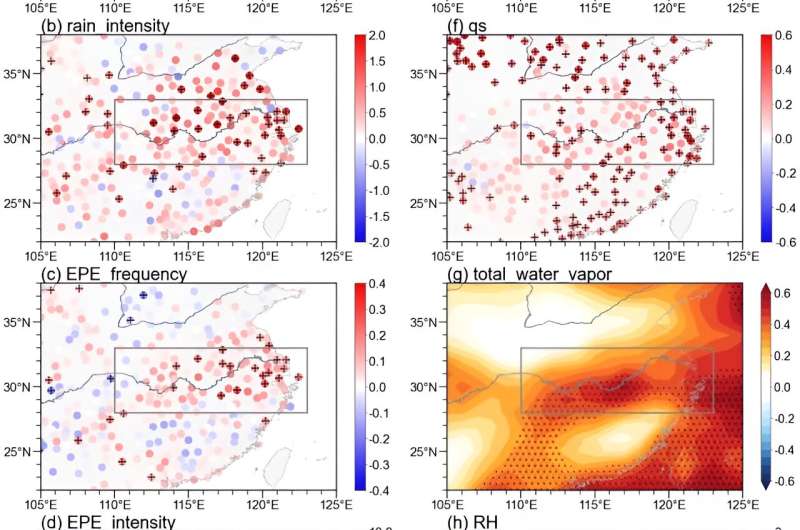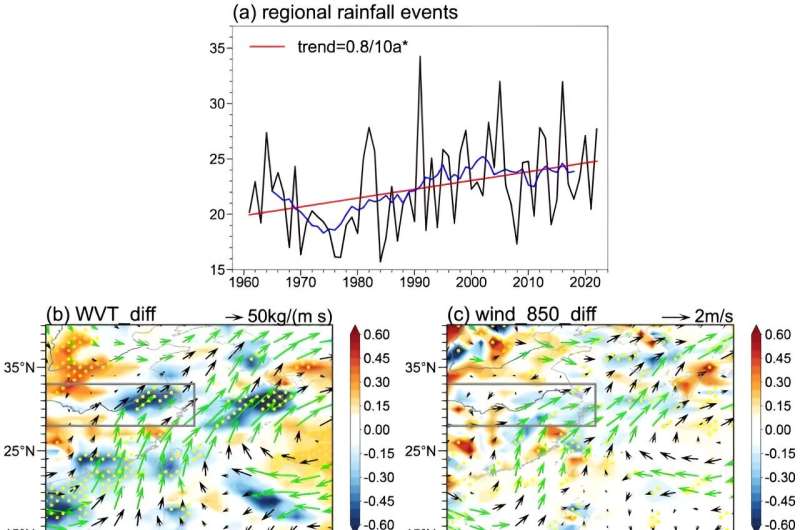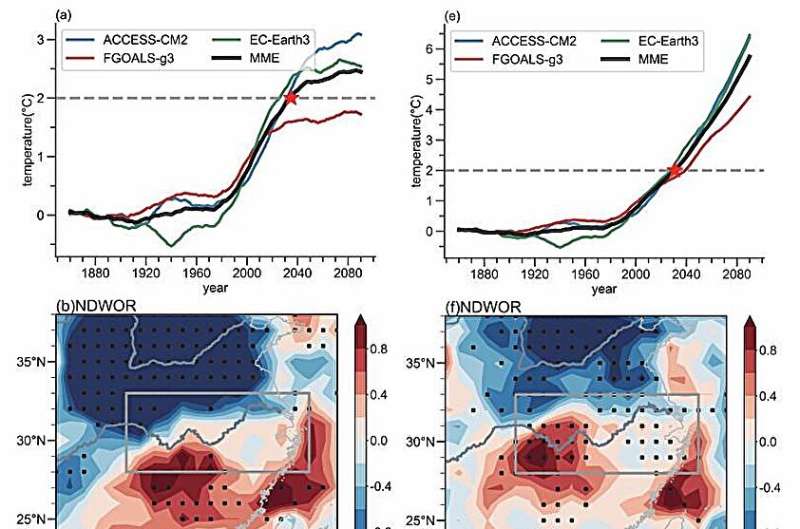This article has been reviewed according to Science X's editorial process and policies. Editors have highlighted the following attributes while ensuring the content's credibility:
fact-checked
trusted source
proofread
Examining how Mei-yu precipitation responds to climate change

Mei-yu (i.e., plume rain) is a distinct weather phenomenon in East Asia during summer, which is generally characterized by persistent rainy and cloudy weather in the middle-lower Yangtze River valley (hereinafter referred to as YRV) region from mid-June to early July. Under global warming, anomalous Mei-yu has caused severe meteorological disasters during recent years.
For instance, in 2020, extreme precipitation events frequently occurred in the YRV region during the Mei-yu period, which caused flood and resulted in over 200 deaths/missing persons and over 170 billion CNY of direct economic losses. In 2022, persistent high temperature and drought events occurred in the YRV region during the Mei-yu period, which greatly affected the agriculture, hydropower, and human health. These extreme events during the Mei-yu period have brought severe challenges to the government for combating climate change.
Published in the journal National Science Review, the study was led by Prof. Huijun Wang (Nanjing University of Information Science & Technology) and Prof. Bo Sun (Nanjing University of Information Science & Technology), and investigates the changes in the characteristics of Mei-yu under global warming and the potential reasons based on observation and reanalysis data during 1961–2022.
"The number of days without rainfall (NDWOR), intensity of rainfall event, and frequency and intensity of extreme precipitation events (EPE) in the YRV region during the Mei-yu period (June 15–July 10) show increasing trends over the past six decades," Prof. Huijun Wang says. "These trends indicate that the weather during the Mei-yu period is becoming more unstable and extreme under global warming."

The team found that the increasing trend of NDWOR during the Mei-yu period is related to decreased near-surface relative humidity. According to the Clausius-Clapeyron equation, the saturation specific humidity (qs) would dramatically increase as the global warming continues, at an increasing rate of approximately 7% per ℃ rise in temperature. As qs increases more dramatically than q over the YRV region under global warming, the RH is decreased, which may lead to more days without rainfall during the Mei-yu period.
Another possible reason for the increased NDWOR is that the rainfall event may remove ≥7% more moisture from the air per ℃ of local warming. Hence, the air may need a longer time to be replenished with water vapor before next rainfall event in a warming climate.
Prof. Bo Sun pointed out that the increased intensity of rainfall event and frequency/intensity of EPE during the Mei-yu period may be attributed to combined effects of thermodynamic and dynamic factors. "In a warming climate, the regional rainfall events during the Mei-yu period are associated with stronger water vapor transport, convergence, and convections in the troposphere, which result in increased intensity of rainfall events and hence increased frequency of EPE," Bo Says.

Furthermore, the researchers analyzed the response of Mei-yu to 2℃ of global warming with respect to pre-industrial climate using CMIP6 models. The results suggest that the NDWOR, intensity of rainfall events, and frequency of EPE will be increased in the YRV region during the Mei-yu period under the 2℃ warming scenario, which imply a more challenging climate risk management in the future.
More information: Bo Sun et al, How does Mei-yu precipitation respond to climate change?, National Science Review (2023). DOI: 10.1093/nsr/nwad246
Provided by Science China Press




















